A while back I wrote some articles about things I do differently, but there
was something I didn’t know how to put into words until now — I think about everything in Magic in terms of ranges.
What does that mean? Well, let’s start with an example.
How to Beat Their Perfect Draws
I’ve had a bunch of conversations lately about how to beat your opponent’s best draws. Typically this is used as a reason to not play a certain deck.
“How do you beat Lion, Witch, Wardrobe?”
“How do you beat Aqueous Form on a Favored Hoplite with three Gods Willings?”
“How do you beat Turn 2 Storm kills when they Duress you twice?”
Realistically, you don’t.
I’ve played decks like Shardless Sultai and done quite well against plenty of “bad” matchups in tournaments like Burn and Storm. While decks are capable of
getting “free wins” by having their best draws, that won’t happen in the majority of cases. Brad Nelson and I have this conversation regularly, and we agree that it’s something that
people are too afraid of. Your opponents won’t always have their nut draws or the best build possible against your deck.
In the earlygame, most boardstates will look like one of the following five situations:
- You’re very ahead
- You’re slightly ahead
- The game is even
- You’re slightly behind
- You’re very behind
That’s overly simplistic, but most of the time, you’ll actually be playing Magic instead of backpedaling. Your opponents don’t always have their best
draws, and while some decks (G/R Tron, Amulet Bloom, Storm) may appear to have unbeatable draws more than other decks, that simply isn’t the case.
Learn to accept that some games aren’t going to be winnable. You lose far more equity by aggressively mulliganing or oversideboarding for a matchup you
hate losing to than by simply hedging. Much of this boils down to hedging and it being correct. By hedging, you’re building your deck, sideboarding, and
mulliganing to be able to beat your opponent’s range of draws, not beating their best draws. Odds are, you’re going to have some nut draws yourself, so all
of that should even out over time. Continue to make +EV decisions, accept that making those +EV decisions does not mean you deserve to win, and eventually
something nice will happen.
Mulliganing Against Their Range
Consider when you’re looking at your opening hand. How often do you ship back a perfectly reasonable hand because your opponent might have a perfect hand
that trumps yours? Because of how unlikely it is (and the fact that it’s just as likely it happens when you mulligan anyway), I hope that you’re not
shipping those hands often.
When I was playing Jund in Modern, I had a hand very similar to this against Amulet Bloom:
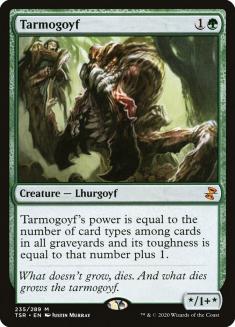
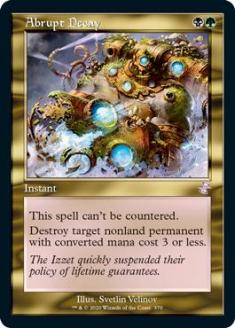
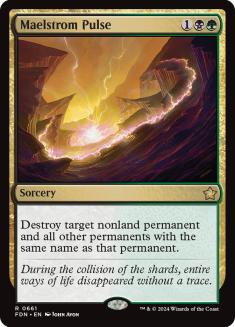

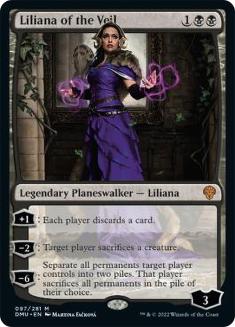
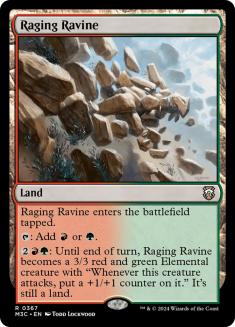
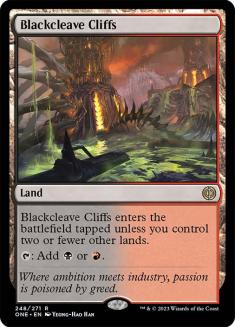


I was up a game and on the draw, while my opponent was mulliganing to six. In the end, I shipped it, but I think that’s the entirely wrong mentality.
Realistically, a lot of things could go wrong by keeping a hand like this, but it’s actually got a lot going for it.
For starters, if my opponent is mulliganing shaky hands because they don’t contain a Leyline of Sanctity, that’s great for me because I don’t have anything
that cares about Leyline except for Liliana of the Veil. Secondly, while this hand doesn’t have any sort of disruption, it does have a lot of ways to
actually remove a Primeval Titan.
The rub is that Primeval Titans often chain together thanks to searching for Simic Growth Chamber and Tolaria West, so it’s not a guarantee that my removal
can hold them down. If they’re using Summoner’s Pact to find their Primeval Titans, I might be alright because they’ll only be able to play a Titan every
other turn assuming I can destroy each copy of Amulet of Vigor they find.
That hand could be an easy mulligan because you’ll likely be looking at a similar six-card hand given what Jund looks like after sideboard against Amulet
Bloom. The only difference is that maybe you find a piece of relevant disruption. One of the biggest strikes against mulliganing the hand is that even if I
do find a piece of disruption, like a Thoughtseize or Fulminator Mage, it might not matter if my opponent has the perfect draw anyway.
None of this means I give up when they have their nut draw, I keep bad hands, or I won’t build my deck to try and beat it. However, “They had the nuts”
shouldn’t be a good excuse for why you lost. I’m willing to accept that sometimes I will keep a mediocre hand that is statistically viable that won’t
always pan out.
Rigid Thinking and Card Evaluation
How likely is it that the games will play out in a polarized fashion and how likely is it that we’ll be playing actual Magic? I’m willing to bet on the
fact that Amulet Bloom won’t always have their nut draw, and you should too. Things aren’t binary, so there’s no point in having rigid thinking.
Thinking rigidly does nothing except limit you.
That’s why people tend to recommend being open-minded, not just in terms of Magic, but in all facets of life. When you close off your mind to other
possibilities, you stop learning. This applies to basically all elements of Magic, but the one that is most common is definitely card evaluation.
There isn’t a scale you can use to measure a card’s viability because Magic cards don’t exist in a vacuum. Ultimately, you’re looking for a card to serve a
specific purpose, and sometimes that’s a purpose you didn’t know you needed or wanted until someone showed you otherwise. Each card has a range, from its
best case scenario to its worst case scenario, and those scenarios are each based on what’s going on around them.
“That card sucks” is dangerous thinking because it limits your growth as a player. If you’re willing to expand your horizon and think about the context in
which each card may be useful, you might end up finding something that no one else has. It’s rare that a card is actually unplayable these days.
Sideboarding Against Their Range
This might be what I’m best at. Most of how I sideboard comes from feeling and how the games are most likely to play out. However, I’m still aware of each
type of game and will hopefully include some tools that would be useful in other situations.
Matchups aren’t linear, even against the most linear of combo decks. Sideboarding as if the games will always play out the same way is a recipe for
disaster. Similarly, not adjusting your sideboarding strategy when it appears your opponent doesn’t have the same sideboard configuration that you’re used
to playing against matters. For example, if your Atarka Red opponent has brought in a bunch of big stuff, potentially mimicking the sideboard strategy for
R/G Landfall, you probably don’t want a pile of Arashin Clerics.
Decks like Abzan Aggro and Jeskai might have a beatdown draw against your G/R Devotion deck after sideboard, but the chances are higher that they sideboard
into a more controlling deck. Things like Nylea’s Disciple might be good in Game 1, but they are probably not doing much against your opponent who is
focused on controlling your board, not killing you as soon as possible. Sometimes they won’t have the sideboard plan you expect, so you’re often entering
Game 2 playing a guessing game. This is also why I feel like sideboarding guides are a disservice.
How you sideboard should shift game to game, depending on who is on the play and what cards you’ve seen. In my Shardless Sultai Reference, my sideboarding “guide”
was more of a loose outline, and that’s typically how I build my decks.
Find a way to sideboard against their Game 1 deck while also respecting what they can be bringing to the table in Game 2. If you have to shift some stuff
around before Game 3, great! Now you probably have more information to work with, and that should help you formulate a plan.
Deckbuilding Against Their Range
Right now, we have a lot going on in Standard.
- Abzan Aggro
- Esper Dragons
- Esper Control
- Esper Tokens
- Aristocrats
- Atarka Red
- R/G Landfall
- W/B Warriors
- Jeskai Black
- Four-Color Rally
- Eldrazi Ramp
- G/W Megamorph
That’s a lot of decks, and that’s not even counting the small variations for each of them. Can you build your deck to beat Dragonlord Ojutai; Monastery
Swiftspear; Ulamog, the Ceaseless Hunger; Jace, Vryn’s Prodigy; and Siege Rhino? It’s not easy. Sideboarding against their range is actually pretty easy,
but building your starting 60 to have a chance against each of those is nearly impossible.
Let’s make up some completely arbitrary numbers.
Say you have a deck that’s 30% to win a match against Atarka Red, 45% against Abzan Aggro, and averages 70% against the rest of the field — Overall,
that’s very solid. One might be inclined to sacrifice the Atarka Red matchup altogether, probably for the sake of finding a better way to beat Abzan Aggro,
but I think that’s a mistake.
Instead of trying to play four Arashin Clerics for Atarka Red, four Self-Inflicted Wounds for Abzan Aggro, four Hallowed Moonlights for Four-Color Rally,
and three Infinite Obliterations for Eldrazi Ramp, you should try to consolidate slots if you can.
For example, if you have enough instants or sorceries, you can play my Dark Petition package for Infinite Obliteration and Virulent Plague. That should
help against Eldrazi Ramp and Atarka Red. If you have sweepers, it could even help against Rally. Maybe Dark Petition can even find a Languish for Abzan
Aggro! An additional Languish would even help against Atarka Red. Duress is great against a wide variety of decks, including Esper Dragons, Four-Color
Rally, Eldrazi Ramp, and Atarka Red.
You don’t necessarily need the best possible hate cards against each deck. Sometimes it’s better to improve your deck slightly after sideboard and hope
that’s enough. Abzan Aggro aside, that’s generally the best way to attack an open field.
Matchups (and Why Data is Mostly Irrelevant)
In order to build decks and tune them for the metagame, I need to know what’s good against what. In this day and age, how matchups play out are often
predicated on what cards your opponent plays and/or draws, not necessarily on deck archetype. Additionally, the skill level for each pilot matters. Because
of that, it’s possible to get wildly varying results from people testing certain matchups.
I generally like to just get a feel for how a matchup plays out and what cards play an important role. If I end up being a slight dog in a matchup overall,
but I have a good sideboard plan, they might not necessarily have a good sideboard plan, and I’m going to execute my plan correctly while they may not,
that’s a bonus. Often times, it ends up with me playing something like Five-Color Bring to Light at an Open, knowing full well my Atarka Red matchup isn’t
very good, and going 3-1 against it overall.
Yes, my matchup is bad in theory, but I end up picking up lots of percentage points in various spots and that eventually translates into some wins. That
strategy might not work at a Pro Tour because I likely won’t be getting as many free edges, so it’s important to note that distinction when you’re deciding
what deck to play for a certain tournament.
The other thing to be aware of when testing matchups is which side of the matchup the onus lies on. For example, G/R Monsters was supposed to be a favorite
against Mono-Black Devotion, but that was basically only when the Devotion player didn’t have a good plan or approached the matchup poorly. Conversely, G/R
Monsters didn’t have a whole lot of decision points in-game or while sideboarding, so it was fairly simple to not mess up your gameplan on that side of the
matchup. G/R Monsters often did the same thing every game, while Mono-Black Devotion struggled with answering threats and presenting their own clock (which
is remarkably similar to Abzan Aggro versus Jeskai Black).
By simply stating “G/R Monsters is a favorite against Mono-Black Devotion” (or even vice versa), you’re kind of missing the point. Who the favorite
actually is depends on the two players who are sitting across from each other, how talented they are, how well-practiced they are, and what their 75 cards
are. There are too many variables, so boiling it all down to a number is reductive.
The numbers don’t matter. What matters are the how’s and why’s of the matchups, and what you can do about them.
On a Completely Unrelated Note
Plenty of things are happening in Standard, but I’d like to point out that Esper Dragons is simply a re-tooled Jeskai Black. With Abzan Aggro taking up
huge chunks of the Day 2 metagame at various Grand Prix, Fiery Impulse is a lackluster maindeck card, and therefore, Jeskai Black isn’t very good anymore.
Instead, you need to turn toward unconditional removal rather than hoping your specific removal spells line up against their varied threats.
Sure, you can find room for four Roasts or Valorous Stances or Self-Inflicted Wounds in your Jeskai Black deck and hope it’s good enough, but that’s not
the right way to solve the problem. At this point, Esper Dragons isn’t even a great answer to Abzan Aggro because the best card in the Abzan Aggro mirror,
and one that is particularly good against Esper Dragons, is Self-Inflicted Wound. Your Dragonlord Ojutais are no longer safe, so the world is already
hostile toward Esper Dragons.
Still, there is likely a way to rebuild some sort of Jace, Vryn’s Prodigy deck that’s removal-heavy and turns the corner quickly, even in this field. Esper
Red did not pan out so far, but I’ll keep working.
